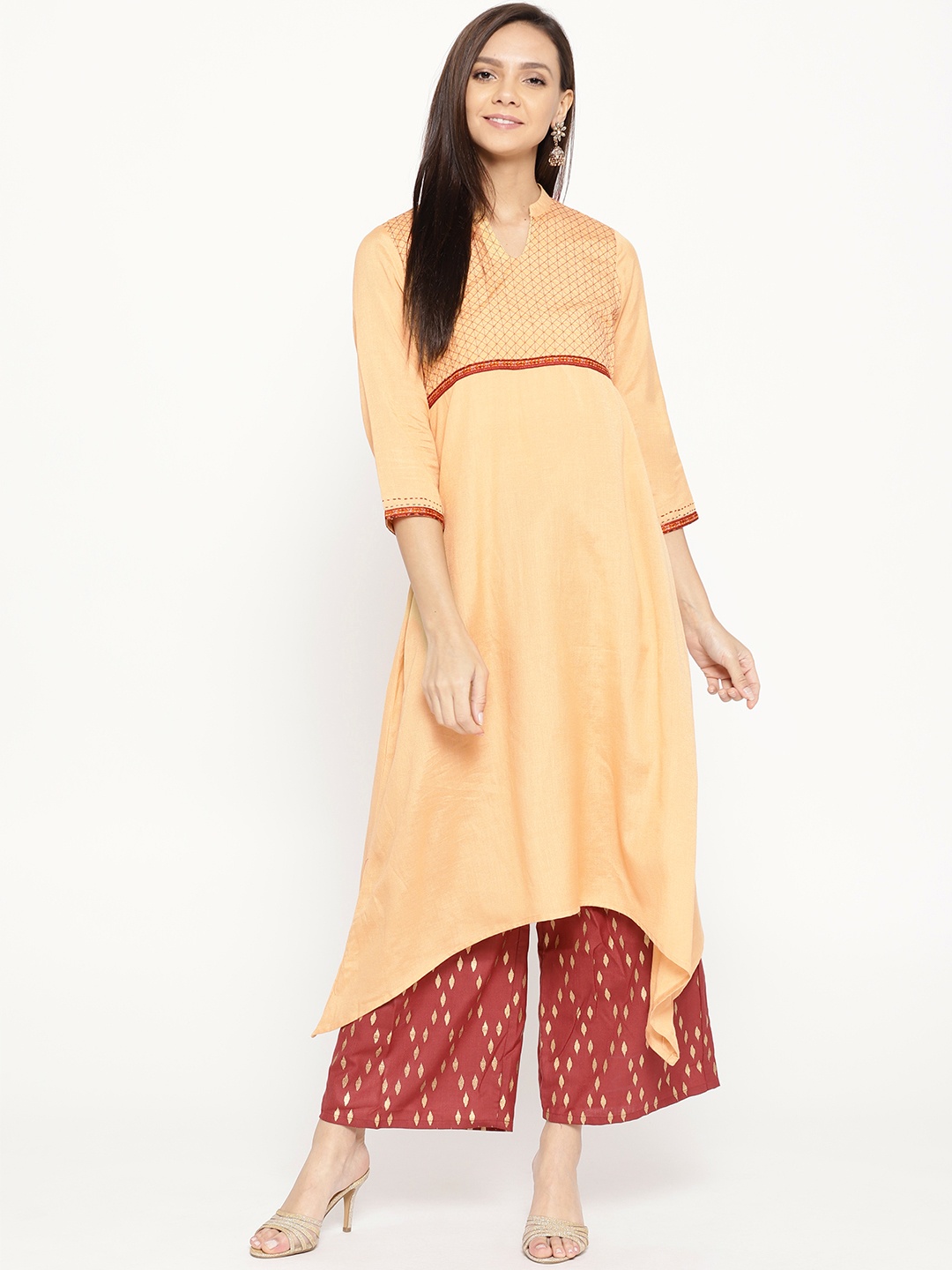7 Easy Tips On How To Choose Winter Clothes For Sensitive Skin
Having sensitive skin shouldn't limit your fashion choices. Here are 7 easy tips that can help you learn how to choose winter clothes for sensitive skin to look stylish and stay comfortable.

Build your wardrobe with these easy tips on how to choose winter clothes for sensitive skin
Winter fashion is all about styling cosy jumpers and sweaters with different bottoms. But for people with sensitive skin, the wrong clothing choice can lead to redness, irritation, and discomfort. To this, add the cold winds, dry air, and heavy synthetic fibres that make winter more like a challenge that a cosy season. But with this easy guide, you can learn how to choose winter clothes for senstive skin that not only look stylish but feel gentle. From selecting the right fabric to mastering the layering techniques, keep on reading and learn how to stay cosy without being uncomfortable.

Here's how you can choose winter clothes for sensitive skin; Photo Credit: Pexels
Be it sweaty monsoon, scorching summer, or cold winter, sensitive skin needs extra attention in every season. Thus, it becomes imperative to use the right fabrics every season. When it comes to winter, things can get a little tricky with the types of fabrics, what to choose, what to replace, and where to begin. Here are some important tips that can help you get started and make a significant diffrence in your comfort level.
Also Read: Best Tips On How To Choose The Right Jacket Based On Your Climate
7 Tips To Choose Winter Clothes For Sensitive Skin
1. Understand The Cause
Before shopping winter clothes for sensitive skn, identify what triggers irritation. It can be rough textures, tight fits, or synthetic fibers. One tip is to try on different fabrics and clothes to prepare a mental checklist of what causes discomfort in cold weather. Remember, the goal is to protect the natural skin barrier while providing the right warmth and style in winter.
2. Opt For Natural And Breathable Fabrics
Fabrics like wool and nylon has have skin-irritating rough fibres. Wearing these winter clothes all day can make your skin itch and turn red shortly.
On the other hand, natural fibres like cotton, bamboo, silk, and merino wool perform excellently for sensitive skin. They allow airflow, prevent sweating, reduce the risk of overheating, and do not cause irritation. Synthetic fibres can easily trap sweat, heat, and moisture, leading to a foul odour and all-day discomfort.
3. Use Layering To Prevent Direct Fabric Contact
Let's be honest, layering is essential in winter. But when it comes to sensitive skin, layering clothes requires the right strategy. Start with a soft, finely woven cotton or bamboo-blend base that acts as a protective shield between your skin and outer garments. It can also prevent itchiness and sweat buildup that traps moisture and heat. Next, add a middle layer of fleece or merino wool, depending on the level of warmthness you need to survive the cold.

Use natural-fibre layering to prevent itchiness, sweat, and overheating; Photo Credit: Pexels
4. Choosse Hypoallergenic And Dye-Free Options
Many winter clothes undergo harsh chemical treatments, dyes, and bleaches that can irritate sensitive skin. Thus, it's important to check the labels and tags while shopping. Look for garments with "chemical-free" or "organic" labels to minimise the dependency on irritation-causing harsh substances.
Similarly, neutral colours like white, beige, and light grey are also safer choices. These colours don't need much chemical processing to become style worthy. Avoid clothes with a strong fragrance as these can also cause irritation to sensitive skin.
Hypoallergic, chemical-free, and dye-free winter clothes minimise direct explosure to harsh substances. If available, check out eco-friendly brands that make fashionable items using non-toxic materials.
5. Replace Itchy Wool With Softer Alternatives
Traditional wool sweaters keep us cosy, comfortable, and warm in winter. However, many woollen-based winter clothes can feel scratchy and uncomfortable on sensitive skin. If you still prefer the snuggly feel of woollen sweaters, replace itchy ones with softer alternatives. In other words, look for sweaters made with merino wool, high-quality cashmere, fleece, or cotton-blend knits. Another tip is to wear a full-sleeve top under your sweater to avoid direct contact with the fabric.
6. Avoid Harsh Seams, Tight Fits, And Scratchy Tags
Unfortunately, even the softest fabric can irritate your skin if the fit is too tight or seams are too rough. Wearing snug winter clothes every day can create friction on your skin, leading to redness and itchiness. So when shopping, always check the inner stitching quality against your skin to find if it is gliding smoothly or roughly like sand paper.
If available, choose winter clothes with flat seams or seamless designs. Additionally, opt for loose-fitting clothes that do not stick to your skin. These clothes prevent rubbing and allow better air circulation. When checking sleeves, avoid elastic bands as they can leave marks on the skin and cause irritation.

Avoid winter clothes with harsh seams and itchy tags; Photo Credit: Unsplash
7. Wash Winter Clothes The Right Way
Using harsh detergents or fabric softeners can leave residue on winter clothes that often irritate sensitive skin. Thus, always use mild, fragrance-free detergents to preserve the softness of your clothes. Avoid bleach or fabric softeners and always wash new clothes before wearing them to clean properly. You can also rely on an extra rinse cycle in clean water to ensure your clothes are free from any residue.
These were some of the tips on how to choose winter clothes for sensitive skin. To sum it up, the trick lies is beginning with identifying the root cause. Next, choose natural fibres for a soft feel, use layering to prevent itchiness, opt for hypoallergenic clothes, replace itchy wool with softer alternatives, avoid scratchy tags or seams, and lastly, wash your winter clothes the right way. With these handy tips, you can sort your winter wardrobe for 2025 in a matter of no time.
Frequently Asked Questions (FAQs)
1. What clothing is best for sensitive skin in winter?
Start with a soft layer made of organic cotton or bamboo blend. Next, add a middle layer and avoid using synthetic materials like polyester that can cause friction.
2. What type of fabric is best for sensitive skin?
Winter clothes made of organic cotton, bamboo blend, and merino wool are an ideal choice for sensitive skin. These fabrics are airy, do not cause friction, and keep sweat buildup out of the picture.
3. Which fabric is not itchy?
Certain fabrics, like cotton, bamboo, linen, and silk do not feel itchy on the skin. Instead, they are soft, breathable, and moisture-wicking.
4. Is silk or cotton better for sensitive skin?
Both silk and cotton are ideal for sensitive skin people. They are hypoallergenic, do not cause friction, do not retain moisture, and glide smoothly on the skin.
5. Is 100% cotton good for sensitive skin?
Yes, 100% cotton can be one of the best options for sensitive skin. Being a natural fibre, cotton allows great air circulation and is free from harsh chemicals and dyes.

























